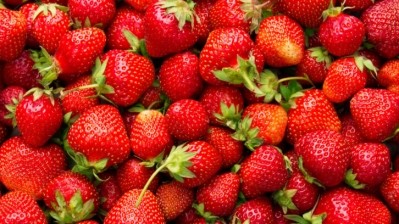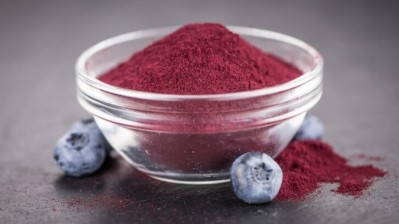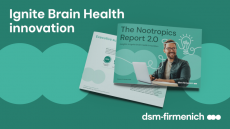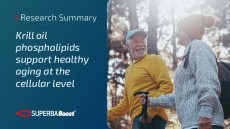Researchers explore the pathways to berry health benefits
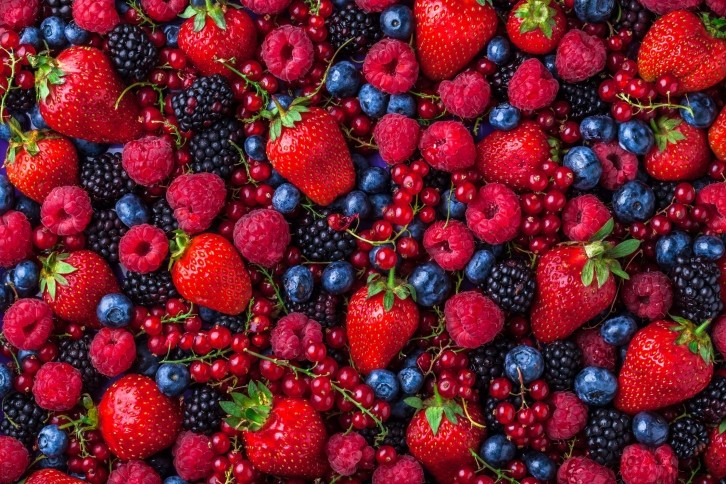
Sessions on brain, heart, gut and skin health underscored the latest research into the effects of berry consumption on cognition, mood and vascular function across life stages in healthy and at-risk populations.
“There seems to be multiple metabolites that have activities on multiple pathways in multiple cell lines,” said Dr. Colin Kay, an expert in translational and precision nutrition, who shared findings from a collection of blueberry, blackberry, strawberry, bilberry and blackcurrant studies to provide a synthesis of the current state of berry science.
An array of anthocyanins
The multiplicities begin with anthocyanins – to date the most cited class of polyphenols for their potent antioxidant and anti-inflammatory properties. Benefits include the regulation of blood glucose, insulin resistance, lipid profile, fatty liver disease and inflammation to mitigate diseases of the circulatory, digestive, endocrine, immune, nervous, sensory and urinary systems.
The compounds and their concentrations, however, differ from berry to berry and from cultivar to cultivar. Whereas a blackberry contains largely cyanidins, other berries may have a more diverse composition of delphinidin, petunidin, pelargonidin, peonidin and malvidin, as well as the more complex acylated anthocyanins. These variations could contribute to how they are metabolized in the body.
“The chemical structure of the anthocyanin may affect its uptake even though as a class they have a lot in common,” said Dr. Monica Giusti of Ohio State University, who reported on the activity of chokeberry and grape anthocyanins through human gastric epithelial cells.
The science indicates that while anthocyanins are poorly absorbed, it is the smaller beneficial microbial metabolites converted from the anthocyanins that enter the bloodstream to battle inflammation.
All pathways lead to the gut
In the gut health session, researchers spoke to the potential role of berries in restoring mucosal function and the integrity of the gut barrier, increasing gut microbiome diversity and promoting the growth of healthy gut bacteria.
There was a particular buzz around the beneficial bacterium Akkermansia, which seems to be stimulated by the prebiotic-like effects of anthocyanins. A relative newcomer to the scientific literature, Akkermansia is associated with significantly improved metabolic outcomes.
“The question we’re kind of getting at, at this conference, with respect to the microbiome is: Are the anthocyanins affecting the gut and then is the gut microbiome affecting health, or are the anthocyanins being metabolized by the gut and then the circulating species of the gut metabolites are affecting biological activity?” Dr. Kay said.
Discussing the chemoprotective effects of black raspberry, Dr. Li-Shu Wang of the Medical College of Wisconsin echoed literature reviews touting the importance of not only the anthocyanins but the whole berry (including the fiber, minerals and vitamins) due to the synergies between bioactive compounds and interaction with the fruit matrix.
“You have to provide the bacteria with substrate, the whole berries and the fiber group,” she said. “Anthocyanins alone don’t do it. The whole berry is still better than when you dissect it out – it is already mixed in perfect combination.”
Spotlight on the skin exposome
Dr. Giuseppe Valacchi of North Carolina State University linked the power of blueberry anthocyanins to the skin exposome, presenting exposure to pollution as the up-and-coming leading cause of death. He cited World Health Organization figures that contaminants – whether ozone (primarily), ultraviolet rays, sulfur oxide, carbon monoxide, particulate matter or their synergistic combination – already contribute to seven million premature deaths a year.
“The skin is the largest sensory organ that we have,” he said. “It is not there to just be clean and to be nice and to get compliments but has a lot of function: wound healing, communication, temperature regulation, perception. All these properties can be lost or damaged or partially lost due to damage as a consequence of extreme outside stressors.”
Acknowledging that skin is not the perfect barrier, particularly as it degrades with age, he and other cutaneous researchers spoke to the potential protective effects of anthocyanins in staving off a cascade of reactive biological processes along inflammasome pathways responsible for the biological and clinical signs of aging.
Expanding the berry basket with supplements
“Berry supplements deserve a prominent place in the berry basket,” Melanie Bush, vice president of science and research at Artemis International, told the audience of scientists, growers and nutritionists. “Berry supplements are not intended to compete with fresh fruit but can help to solve important challenges and limitations. Our mission is the same as yours, to get the berry benefits to more people.”
She appeared on an industry panel with third-party lab Complete Phytochemical Solutions and supplement brand Nature’s Way to advocate for the acceptance of science-backed, quality-ensured supplements in the diet.
Using ElderCraft elderberry extract as case study, they traced the lifecycle of the Sambucus nigra cultivar from the growing fields in Austria and on through a whole berry extraction process, third-party lab verification and good manufacturing practices.
Opportunities highlighted included increasing access to berry benefits across geographies and socio-demographics, diversifying phytochemicals consumed, sidestepping palatability issues of some of the more sour species and generating standardized dosages and compounds.
In his keynote speech on establishing the first official dietary recommendations for flavo-3-nols, Dr. Taylor Wallace, media personality and Think Healthy Group CEO, noted his dissenting comments on the decision to reserve these recommendations to food-based guidelines alone.
“It’s my opinion that while ‘food first’ is a primary goal, it is often impractical for a large portion of the population,” he said. “Dietary supplements are practical, easily implemented by most consumers and a good ‘plan B’ to help fill gaps in the diet.”
More research is needed
The presenters all agreed that more research is needed, particularly with larger cohorts to determine what is responsible for the diverse effects in diverse populations across diverse pathways.
“Factors including but not limited to baseline health, age, dietary polyphenol intake and the gut microbiota can impact polyphenol bioavailability and thus efficacy,” said Dr. Sarah Johnson of Colorado State University.
Dr. Kay hopes that the National Institutes of Health’s upcoming $170 million precision nutrition study across a pool of 10,000 participants will contribute to understanding these factors and address the variability in the findings.
For future study, Dr. Barbara Shukitt-Hale of USDA & Tufts University highlighted the consideration of the timing of the intervention.
“Both acute and chronic berry fruit intake, at physically relevant intakes, have shown beneficial effects on the brain,” she said, noting that consumption of blueberries following unpredictable stressors like strokes could help to reduce oxidative stress and inflammation.
Also on the research agenda: Examining the beneficial effects of lower dosages, formulating for stressors like increased screen time exposure, berry benefits for bone loss prevention and evaluating other compounds like chlorogenic acid or volatiles (the latter a terpene responsible for berry aroma).
“We've talked almost exclusively about phenolic compounds throughout this conference, but what about other phytochemicals that might be important in terms of protection against inflammation and oxidation?" asked Dr. Luke Howard, recently retired from the University of Arkansas. “Blackberry volatiles have showed comparable, or better, anti-inflammatory activities as polyphenols even though they are a thousand-fold less concentrated.”
The Berry Health Benefit Symposium awarded Dr. Howard this year's Jim Joseph Award for his lifetime of contribution to berry science.

